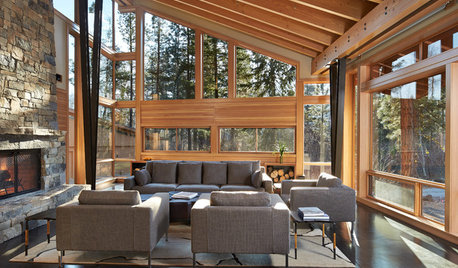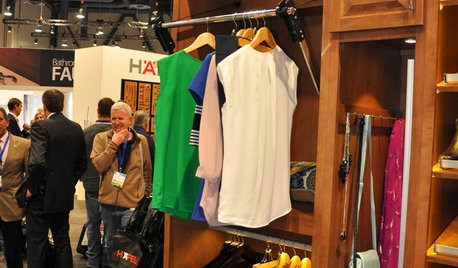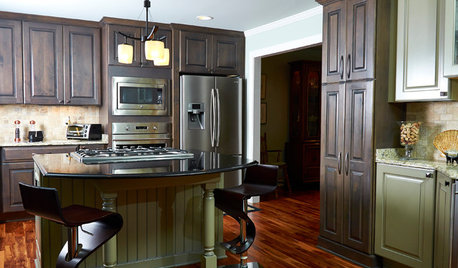remote vs. in-line blowers on kitchen vents
genie73
14 years ago
Featured Answer
Sort by:Oldest
Comments (15)
davidro1
14 years agoclinresga
14 years agoRelated Discussions
ventilation/remote blower--where does it go? options?
Comments (1)Remote blowers mount on the roof or side wall of your home. You could get an "inline" blower which is what the Gaggenau set up is. Many manuf make them and they come in various CFM levels. These can be mounted in your cabinet, in the attic, or anywhere along the vent stack that has room and is accessible....See MoreRemote blower on vent hood - much quieter?
Comments (13)Despite being a fan (sorry again...) of remote blowers, I still don't think I'd chuck it all for one unless you are truly kitchen and noise obsessed. As I said on the other thread, 95% of blowers have got to be internal (no reference for that, just an educated guess) and most folks are fine with them. No question at max airflow, the internal will be somewhat louder, but again remember that most of the time you won't be doing that. I'm pretty noise sensitive and our lake house VAH hood with 600 cfm blower internally is loud enough to annoy me. Thus when I started with a clean sheet of paper at the main house i went with the whole remote inline blower/silencer setup (which has cost me some time, money, and stress as we've hit the usual problems as we install ductwork). I think it's optimal but not essential (like so much else in this kitchen)....See MoreVent-a-Hood vs. external/inline blower noise
Comments (1)We are using an inline exhaust fan that will be located in our attic. We purchased an optional silencer to go with it, and it is very quiet. Tolerable without the silencer. Great with it....See MorePros/Cons of External vs In-line blowers
Comments (3)Beyond possible differences in manufacturers' equipments' reliability and quality (e.g., quality of balancing), fans and blowers are defined by their fan curves (cfm vs. pressure differential across the fan), and neither has a intrinsic claim to superiority that I'm aware of in any particular size range. They do differ in physical configuration; roof blowers are typically lower profile than roof fans. In-line units are usually axial fans, but large buildings may use large internal blowers in HVAC machinery rooms. (For visualizing the difference between a blower and a fan, see Ametek's website, or think hair blower vs. room fan.) Repair of a unit on a high, steeply pitched roof difficult to access from inside an attic would certainly be harder than a unit on a wall that could be reached by a ladder. And it is also possible to install an in-line fan where it is hard to service, so every configuration has to be judged on its own merits. Given adequate cfm at the predicted pressure loss, I personally would choose a configuration I could best access for repair or replacement. Visual appearance would be secondary, but that might vary with how obtrusive the best mounting location actually was. kas...See Moreaprince
14 years agobostonpam
14 years agoantss
14 years agogenie73
14 years agocooksnsews
14 years agojackals
14 years agodavidro1
14 years agodeetle63
8 years agoed915
3 years agoCustom Range Hoods
3 years agokaseki
3 years agolast modified: 3 years agoCustom Range Hoods
3 years ago
Related Stories

MODERN HOMESHouzz Tour: Organic Beauty in a Remote Washington Valley
An architect designs almost everything — rugs, light fixtures, counter stools and more — in this modern handcrafted home
Full Story
KITCHEN DESIGNA Cook’s 6 Tips for Buying Kitchen Appliances
An avid home chef answers tricky questions about choosing the right oven, stovetop, vent hood and more
Full Story
HOME OFFICESQuiet, Please! How to Cut Noise Pollution at Home
Leaf blowers, trucks or noisy neighbors driving you berserk? These sound-reduction strategies can help you hush things up
Full Story
KITCHEN DESIGNAutomation Meets Innovation in the Newest Kitchen and Bath Products
Home features from closets to toilets are going touchless, remote controlled and more accessible than ever. See for yourself
Full Story
KITCHEN MAKEOVERSKitchen of the Week: Rich Materials, Better Flow and a Garden View
Adding an island and bumping out a bay window improve this kitchen’s layout and outdoor connection
Full Story
KITCHEN APPLIANCESLove to Cook? You Need a Fan. Find the Right Kind for You
Don't send budget dollars up in smoke when you need new kitchen ventilation. Here are 9 top types to consider
Full Story
KITCHEN DESIGNHow to Choose the Right Hood Fan for Your Kitchen
Keep your kitchen clean and your home's air fresh by understanding all the options for ventilating via a hood fan
Full Story
REMODELING GUIDESBanish Gizmo Blemishes on Your Walls
Unsightly switches, vents and outlets can ruin your interior design's clear complexion. Keep the look pure with an architect's tips
Full Story
KITCHEN DESIGNWhat to Know When Choosing a Range Hood
Find out the types of kitchen range hoods available and the options for customized units
Full Story
KITCHEN APPLIANCESWhat to Consider When Adding a Range Hood
Get to know the types, styles and why you may want to skip a hood altogether
Full Story



Custom Range Hoods